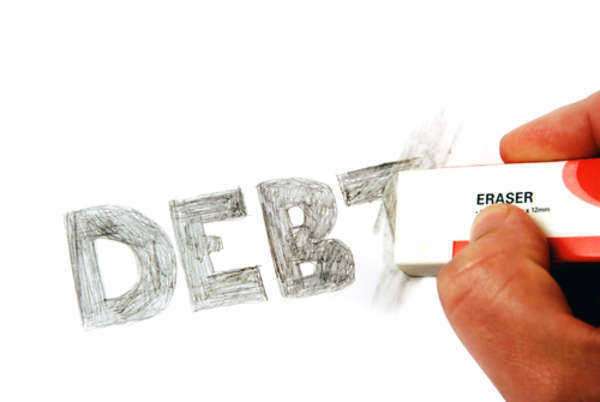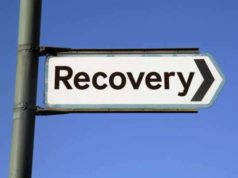
Debt is a common fact of life for most people. Many people may think that debt solely is financial trouble, but it can go deep into a person’s life and impact much more than just their finances. Consumer debt, the kind of debt that comes from personal purchases such as credit card charges or borrowing money, is more rampant today than ever before. In the United States, many people consider consumer debt to be normal behavior, something that comes with being an adult. However, the ease with which people accumulate debt today can quickly escalate to having financial, emotional, and even physical impacts on their well-being. Consumer debt is a complex issue that can have long-lasting consequences on a person’s life. In this article, we will uncover what you didn’t know about consumer debt.
What is consumer debt?
Consumer debt is a type of debt that is incurred by individuals for personal needs rather than business operations. Consumer debt is typically used to fund the purchase of goods and services that are used for personal consumption or pleasure. This type of debt can be unsecured (associated with credit cards) or secured (related to mortgages and automobile loans), with rates of interest usually varying from single digits to the high twenties. Consumer debt is different from debt accumulated by corporations and government entities, which are often secured and have lower interest rates.
Consumer debt in the United States
Consumer debt has been a persistent problem in the United States, with statistics showing that the amount of consumer debt has grown significantly over the past few decades. According to the Federal Reserve Bank of New York’s latest Quarterly Report on Household Debt and Credit, consumer debt has increased by $601 billion in 2020 alone. The total amount of consumer debt in the United States stands at around $4.2 trillion, with an average household debt of approximately $145,000. According to the National Foundation for Credit Counseling, the average household credit card debt is $16,748.
Type of consumer debt
There are several types of consumer debt, each with its unique characteristics and potential risks. Understanding the differences between these types of debts can help you manage your finances better.
1. Credit Card Debt: This is the most common type of consumer debt, and it’s associated with credit cards. Credit cards allow people to purchase items without immediate payment, with interest accruing on unpaid balances. This type of debt is unsecured, meaning the credit card company doesn’t hold any collateral to collect the debt if repayment isn’t made.
2. Mortgage Debt: This type of debt is secured by a property or home. Mortgages are used to purchase a home and are usually long-term commitments (15-30 years). Mortgage interest rates are lower than unsecured consumer debts because they are secured, but not repaying them can lead to foreclosure.
3. Auto Loans: This type of debt is used to purchase a car, truck or other vehicle. Auto loans can be unsecured or secured based on the borrower’s credit history. Auto loans are typically repaid over five years, and the interest rates are generally higher than mortgages but lower than credit card debt.
4. Student Loans: This type of debt is used to finance a higher education degree. Student loans can be either federally or privately funded, with significantly lower interest rates and deferred payments options available. However, not repaying student loans can lead to wage garnishment, and any support in benefit programs such as social security or tax refund is withheld.
5. Personal Loans: This type of debt has no specific purpose, but it is used to fund personal purchases that require immediate payment. Personal loans are unsecured, and relatively high-interest rates are associated with them.
Statistics on consumer debt
Here are some statistics on consumer debt in the United States:
1. Americans owe more than $1 trillion in credit card debt alone.
2. The average American has four credit cards, with an average balance of $6,849.
3. Student loan debt in the United States is over $1.3 trillion.
4. The average household for those who have mortgages has a balance of $143,486
5. Americans spend an average of $1,497 dollars a year on interest alone.
6. The average late fee on a credit card is around $36.
Why is consumer debt increasing in the United States?
There are several reasons why consumer debt is increasing in the United States. One key reason is the culture around spending and the use of credit cards. Through various ads and promotions, credit card companies and other creditors have come to widespread view credit card use and other consumer finance activities as normal everyday behavior. The majority of Americans today use credit cards more often than cash, and the ease of making a purchase without the need for cash can quickly lead to a mentality of consuming what you want and with no limits. There is also a lack of financial education in schools and in their families. With the absence of teaching people how to manage their money for the long term, they are prone to fall into the credit/debt trap. The abundance of credit options and loans creates a false sense of financial security. People often feel like they have money even when they don’t, leading to overspending, and with high-interest rates and late fees, the amount owed can quickly grow larger and larger.
The impact of consumer debt
The impact of consumer debt is not just limited to your pocketbook. Financial issues have far-reaching effects into your physical and emotional wellbeing, causing anxiety, stress, and even depression. Consumer debt affects your physical health, disrupting sleep patterns, and leading to headaches and other stress-related health problems. Your relationships with family and friends can also be impacted by consumer debt.
1. Potential legal action: In extreme cases, debt accumulation can lead to legal action by creditors towards the debtor, either in the form of wage garnishment or seizure of assets.
2. The impact on credit score: If you have numerous outstanding debts, this lowers your credit score, making it difficult to apply for any new loans or credit card accounts. This leads to paying more in interest, and for some, even higher insurance rates.
3. Financial stress: Financial problems cause stress. The fear of being unable to pay bills or the thought of getting calls from creditors can cause a lot of anxiety, and affect people’s ability to lead a normal life.
4. Relationship stress: Finances are one of the primary reasons couples start fighting. Consumer debt can put a strain on relationships, leading to arguments, disagreements, and even divorce.
Consumer debt relief options
If you’re struggling with consumer debt, there are several options available to you. Some of the most common methods include:
1. Create a budget. Develop a monthly spending plan that will help you prioritize your spending and allocate resources, especially to make more than just the basic payments on debts.
2. Contact a credit counselor. A credit counselor can help establish better financial habits and income management, and also negotiate payment terms that work better for your specific situation.
3. Consolidate your debt. This is a way of combining numerous debts into one payment, with just one monthly payment and lower interest rates. Debt consolidation loans or balance transfer credit cards are two options available.
4. Work with a debt settlement company. These companies negotiate with your creditors on your behalf, often leading to lowered debt amounts and interest rates.
Conclusion
Consumer debt is a widespread issue in the United States, and its rise reflects the country’s now-complex economy. It’s important to understand the personal and social impacts of consumer debt, starting with knowing what it is, and how it’s accrued. Financial literacy programs and awareness through education would go a long way towards preventing future consumers from being burdened with long-term consumer debt. Taking the right steps to manage consumer debt can not only lead to a better financial future but also improve your overall health, relationships, and well-being.





























